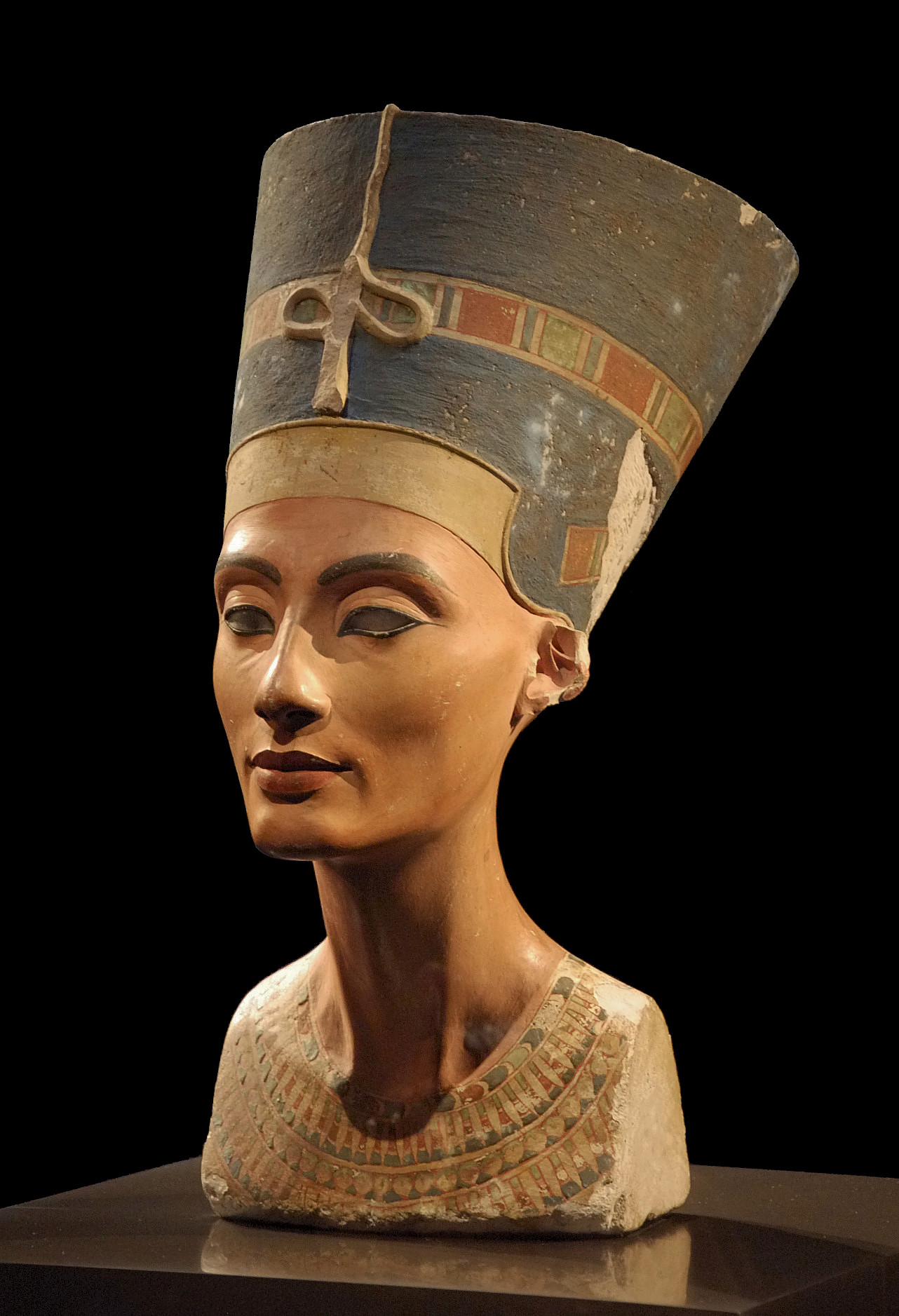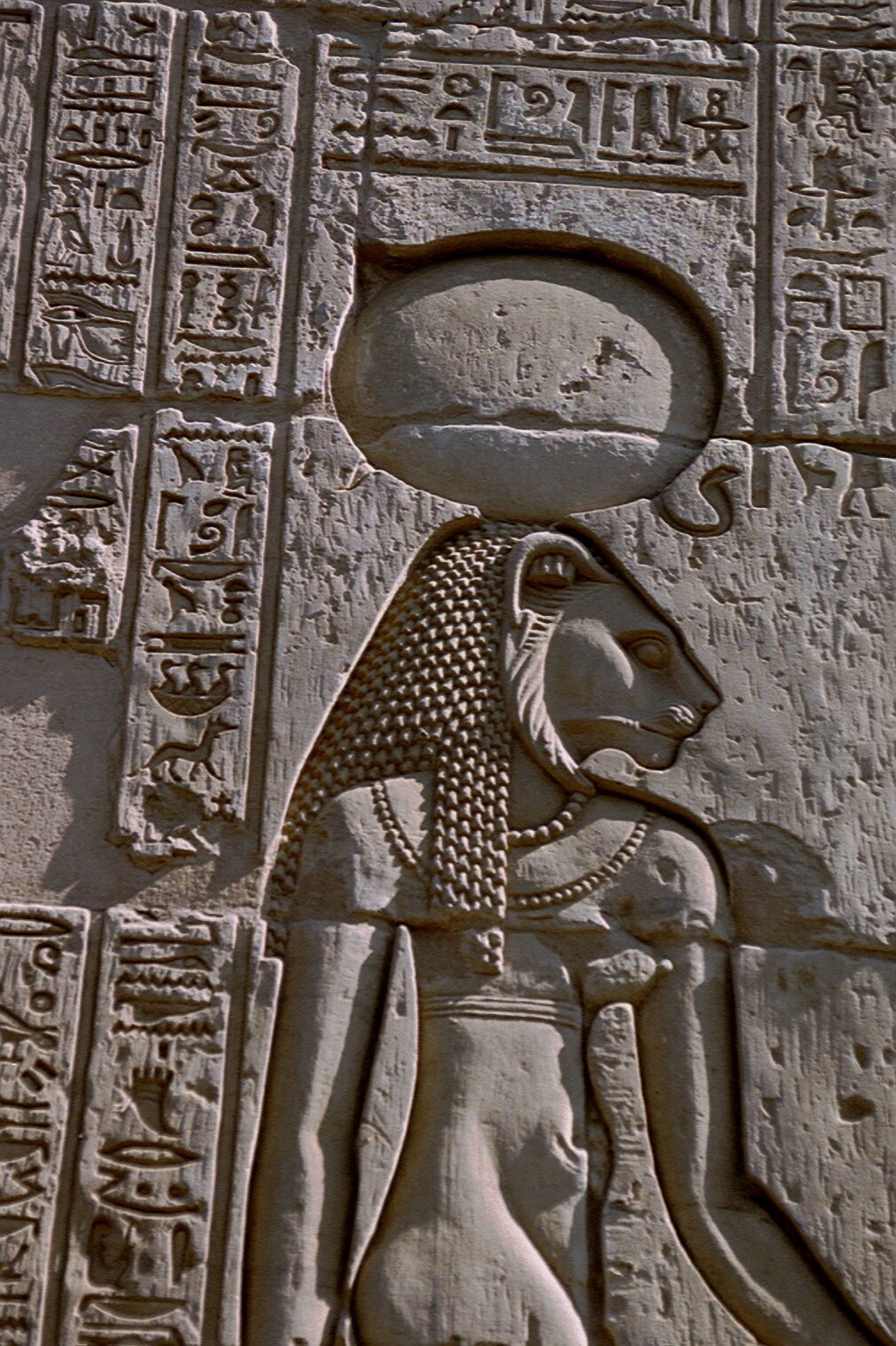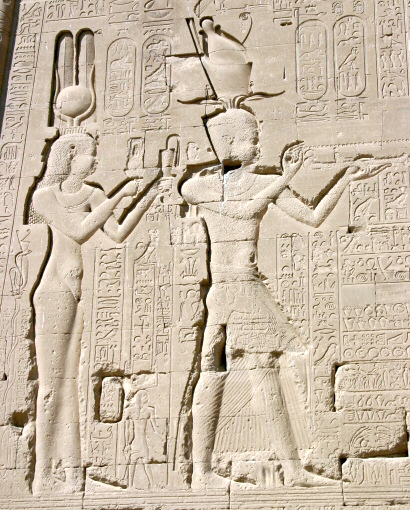 |
|
Great Royal Wife, God’s Wife of Amun and Regent Ahmose-Nefertari (1562-1495 BC)
|
A recent
surveyby Thomson-Reuters Foundation shows Egypt to be the worst state in the Arab world for women’s rights. (It’s also the most populous state in the Arab world.) This is depressing to anyone who believes that every day, in every way, things are getting better and better. Artifacts from ancient Egypt tell us that women’s status then was remarkably high compared to today.
 |
| Great Royal Wife Nefertiti, of course (c.1370-1330 BC). Some Egyptologists believe she had a brief run as a Pharaoh before the accession of Tutankhamun, but that is speculative.
|
One sees this in ancient Egyptian religious iconography. Isis, Hathor, Sekhmet and Bastet were not mere handmaidens to the gods; they were powerful deities in their own right. Since religion was so fundamental to the Egyptians, this set the tone of their society.
 |
|
Sekhmet was the warrior goddess and goddess of healing. She was represented as a lioness, here at the Ptolemaic Temple of Kom Ombo.
|
Ancient Egyptian women could own land, manage their own property, and represent themselves in court. They had the right of divorce, and the right to remarry. They could serve on juries and testify in trials.
As was true of their Greco-Roman and Mesopotamian neighbors, most women worked, although upper-class women generally did not work outside the home. An ancient Egyptian, Merit-Ptah (c. 2700 BC), is the earliest woman scientist we know of; she was in fact memorialized as a “Chief Physician.”
 |
|
Colossal Sphinx of Hatshepsut, Early Eighteenth Dynasty (1479-1458 BC). When a woman pharaoh was represented with a false beard, it was a sign of her authority.
|
Women fairly regularly made it to the top of the pharaonic hierarchy. Egyptologists are certain of many women pharaohs, including Cleopatra VII Philopator, the last pharaoh of ancient Egypt, and Hatshepsut, one of the most successful of all the pharaohs. In addition, some of the Great Royal Wives were powerful politicians, including Tiyi and Nefertiti.
 |
| The last Pharaoh, Cleopatra, with her son and eventual co-ruler, Caesarion. |
Pharaoh was responsible for interacting with the gods; he delegated this duty to his priesthood, which included both men and women. God’s Wife of Amun was the highest ranking priestess; this title was held by a daughter of the High Priest of Amun. A later position, Divine Adoratrice of Amun, facilitated the transfer of power from one pharaoh to the next. The Divine Adoratrice was responsible for Amun’s temple duties and properties, essentially putting her in control of a large chunk of the economy.
 |
| A Twenty-Second Dynasty Divine Adoratrice of Amun, (c. 943-720 BC) |
How do we know all this? Art, of course. The stelae, statues, paintings, furniture and papyri so laboriously created by the ancient Egyptians for use in funerary rites make them the best-understood of all ancient societies.
Let me know if you’re interested in painting with me in Maine in 2014 or Rochester at any time. Click here for more information on my Maine workshops!





